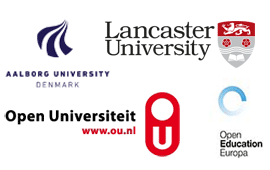

Using Distributed Scrum for Supporting an Online Community - A Qualitative Descriptive Study of Students’ Perceptions
Jörgen Söderback, Stefan Hrastinski, Lena-Maria Öberg, Mid Sweden University,
One purpose of higher education is to prepare students for a modern and ever-changing global society characterized by increasing complexity and collaborative environments. Scrum is an agile, widely used framework for project management dealing with the development of complex products. Scrum projects are conducted in small, empowered teams with intense communication, interaction and collaboration between the team members, facilitated by a servant-leader Scrum master. Scrum has been commonly used in professional software development and is also now being adopted in other areas, including education. There have been few studies of the application of Scrum in higher education and very few of them have studied distributed Scrum in an online context.
An online learning community has several positive effects for students such as increased learning, engagement, retention and lower risks for isolation and dropouts. Participating in and contributing to a team is dependent on a sense of community, which can be difficult to build up in a distributed environment where members are geographically dispersed and do not have the possibility to meet and communicate face to face.
This study examines to what extent and how distributed Scrum can support building an online learning community, from a student perspective. Twenty students, enrolled in an online course in distributed software development, participated in four Scrum projects as members of distributed Scrum teams, each team consisting of five students. Students' perceptions were investigated by conducting semi-structured interviews. The interview transcripts were analyzed according to Rovai's four dimensions of a classroom community. The results indicate that students were very satisfied with their distributed Scrum projects and that they experienced a high degree of flexibility during the projects. The Scrum process promoted and initiated communication and interaction among students and they learned how to communicate and collaborate effectively in an online environment. The transparency in Scrum was perceived as a key factor to open communication and effective collaboration and also contributed to increasing their motivation and engagement in the projects. Another interesting outcome of this study was understanding the importance of creating a team with members who are similar regarding competence level, ambition and preferences in working schedule.
Keywords
online education, Scrum, distributed, learning community, collaboration, transparency, interaction, motivation
Joint Organising Institutions
| Conference Travel and Accommodation |Doctoral Consortium | Past Conference Proceedings | Contact |